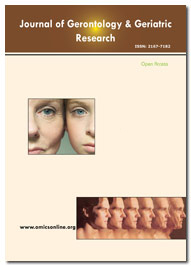Indexed In
- Open J Gate
- Genamics JournalSeek
- SafetyLit
- RefSeek
- Hamdard University
- EBSCO A-Z
- OCLC- WorldCat
- Publons
- Geneva Foundation for Medical Education and Research
- Euro Pub
- Google Scholar
Useful Links
Share This Page
Journal Flyer

Open Access Journals
- Agri and Aquaculture
- Biochemistry
- Bioinformatics & Systems Biology
- Business & Management
- Chemistry
- Clinical Sciences
- Engineering
- Food & Nutrition
- General Science
- Genetics & Molecular Biology
- Immunology & Microbiology
- Medical Sciences
- Neuroscience & Psychology
- Nursing & Health Care
- Pharmaceutical Sciences
Abstract
Development of a Comorbidity Score Based on Institutionalization:Comparative Performance with a Comorbidity Score Modeled on Mortality
Sarah-Gabrielle Beland, Cara Tannenbaum, Thierry Ducruet, Michel Preville and Yola Moride
Background: Comorbidity scores based on the prediction of 1-year mortality risk are used in pharmacoepidemiologic and pharmacoeconomic research to control for unmeasured confounding. However, admission to a long-term care institution may be a more salient and discriminant outcome on which to base comorbidity scores.
Objective: To develop a prescription claims-based comorbidity score to predict institutionalization in the community-dwelling elderly population, and to compare its performance against existing mortality comorbidity scores.
Methods: A geriatric institutionalization comorbidity index was derived from data of a retrospective cohort of 61,172 community-dwelling older adults identified through the Quebec claims databases (2000-2009). Predictors of institutionalization were identified through clinical expertise and by nested case-control analysis. The Framingham Heart Study method was used to develop the score. The performance of the score was assessed through the c-statistic in a separate validation cohort of 26,216 persons and compared with the performance of a mortality score, the Geriatric Comorbidity Index. The robustness was assessed in a cohort of elderly individuals with dementia.
Results: Drugs associated with an increased risk of institutionalization were: antipsychotics, antidepressants, hypoglycaemic agents, statins, benzodiazepines and antihypertensives. The mean score assigned to cases was significantly different from that of controls. The c-statistic for the Institutionalization Comorbidity Index was 0.79 (95% CI: 0.77-0.83) compared to 0.75 (95% CI: 0.73-0.78) for the mortality index. The score was robust when in the dementia cohort Comorbidity Index was 0.81 95% CI: 0.78-0.84).
Conclusion: A score that predicts institutionalization in the community-dwelling elderly population offers improvement over existing comorbidity scores. It may therefore be used in research conducted in this population, especially for drug effectiveness and health economic studies which often involve institutionalization as the outcome
of interest.

